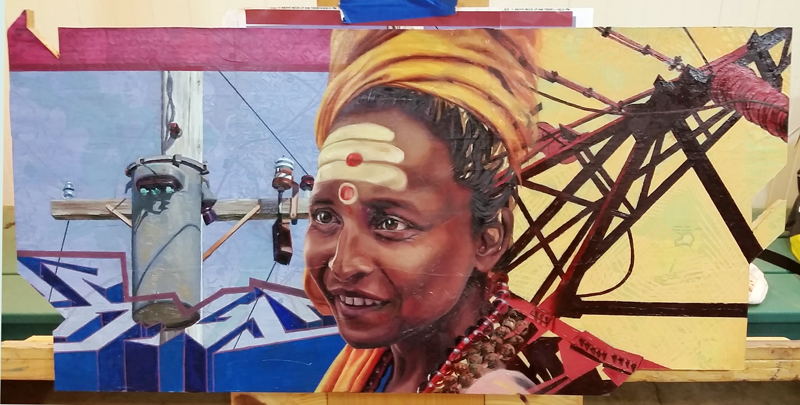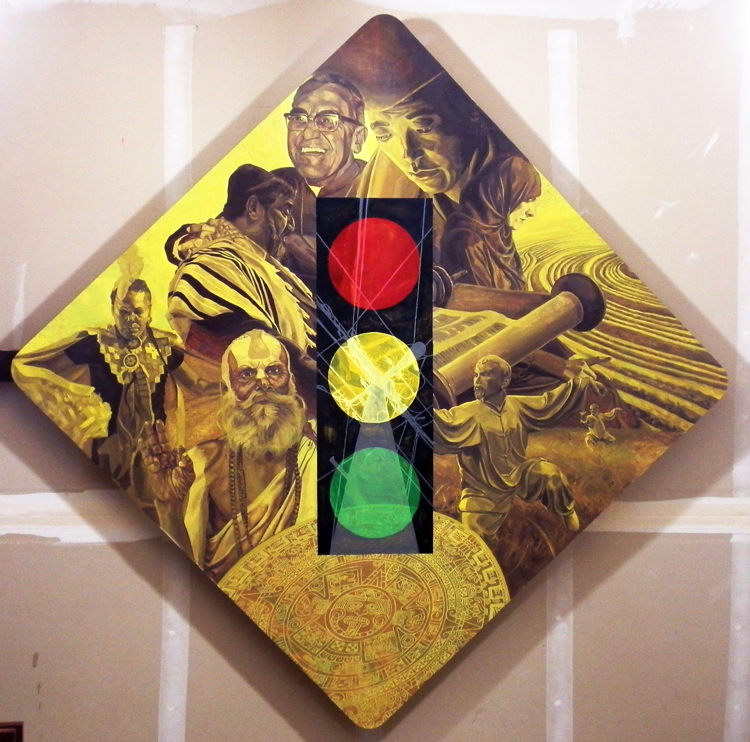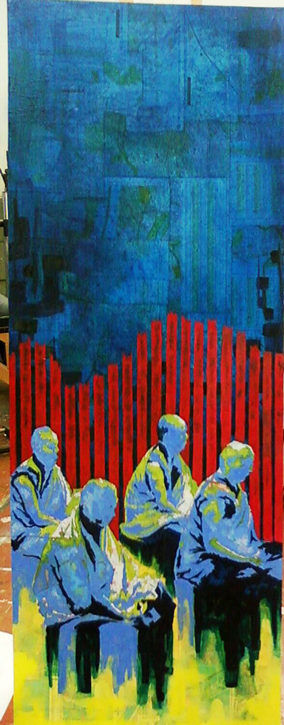I’m interested in examining Cosmic consciousness, The Yogas, Spiritual Intersectionality, Construction of Sacred Space, and the relationship of space to the spiritual world. The Yogas are a subject matter that I’ve been drawn to. They portray a beautiful and vastly complex set of Hindu concepts. Hindu philosophy classifies Yoga, or “union” into a variety of expressions (Bhakti, Karma, Raja, Jnana, Laya, Hatha). But my understanding is these pathways in a humanistic sense, reflect a broader notion that one’s path to the absolute truth is unique to the experience of the individual. In an oversimplified way, these actions and methods are chosen (or inherited) by the individual because they best fit an ontological and soteriological intersection of their experience. The Yogas imply that there are many pathways to experience truth. For me, this is evidence to support that all spiritual practices have the same goal, and worship the same God. Stripped from all social and chronological aspects, the only differences between them are the methods they advocate. I believe that each of these different practices describe a different aspect of the human experience. It’s suggested that one aspect has the potential to be more compatible than another. Additionally, the extension of this idea implies that there is a common thread that runs through the human experience, regardless of religious or spiritual origination. I would describe this common thread as spiritual intersectionality. Encapsulated in this intersection is the experience of truth. And encapsulated in truth is the representation of all other truths routed by other intersecting points on our circle. Ultimately, one truth presents the collective conceptualization of the network that comprises the absolute truth. I attempt to understand each pathway by distilling the essence if a religion’s customs, ceremonies, doctrines, dogma, and philosophies. Subsequently, through the empirical observation, it seems that different types of religious and spiritual expression align their practices closer to one type of yoga over another. In my work, I try to make observe what the distilled core is, and connect it to the holistic experience. I attempt to depict the essence of these spiritual methods by drawing on the spiritual practices and beliefs.
Additionally, maps and powerlines are two visual conceptualizations of these networks. They represent an abstract visual synthesis of life. They depict where life converges, moves, and coalesces. Within the scope of this work, I hope to transmit aspects of these ideas. The symbols, colors, and compositions applied are combined as a visual composite of ideas and notions that might be too complex for words to articulate. Additionally, you will see expressions of asceticism throughout my work because I truly admire it. I’ve taken a special interest in the Hindu Sadhu (and Sandhvi) because I believe they represent the cultivation of the root of humanity. I consider them to be those who have chosen to walk the narrow path, which few are capable of doing.
From a personal perspective, I feel that my spiritual pathway is a blend of seeking God introspectively and extrospectively. I understand that I am rooted in my Christian upbringing, yet fulfilled by eastern spirituality. I straddle both, the need to experience God in community (externally), and the essential need to be reunite with the whole (non-dualism). Eastern spirituality acknowledges that one’s path can in many ways take form as the intersection of multiple paths. In fact it is encouraged to actualize as many aspect of our spiritual pursuit. More specifically, there is one commonality that both Christian and eastern traditions share- and that is the obligation to seek God. Matthew 6:33: “But seek first the kingdom of God and his righteousness, and all these things will be given beside you.” We must be active pursuers of wisdom, that is our purpose. The most important thing that one can do is seek God, or the experience of God. This verse also implies that God is not experienced in a passive way. Implications suggest that truth is a transcendent state beyond the reality we presently observe.






